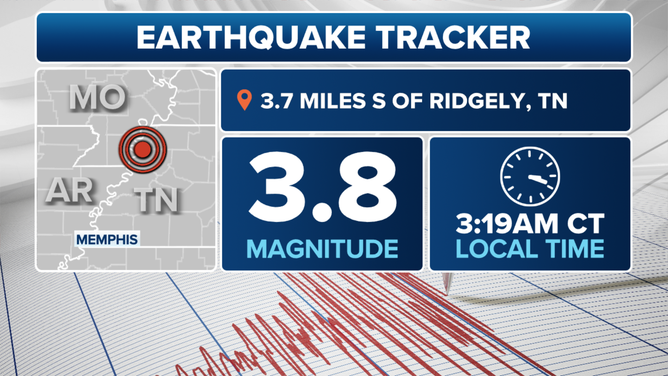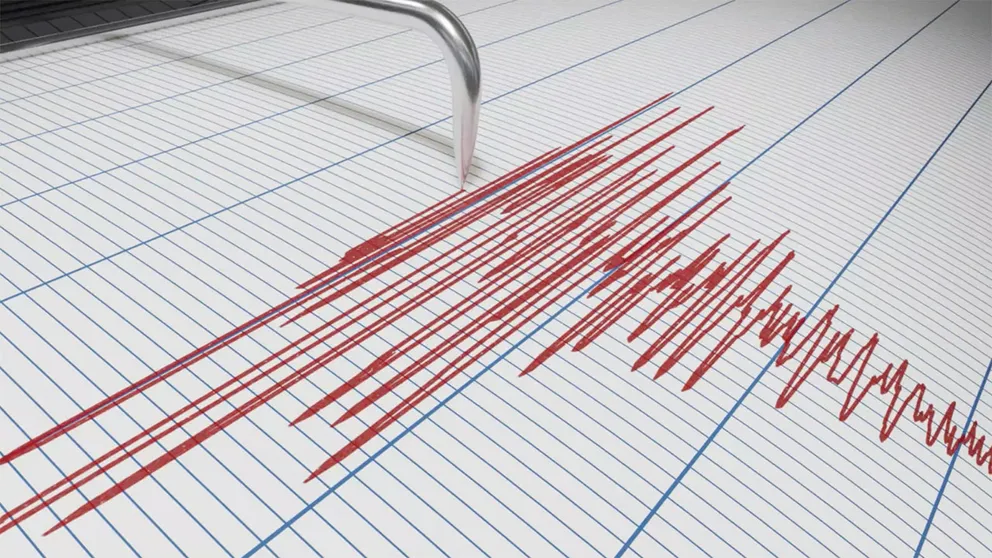New Madrid Seismic Zone not dead: Magnitude 3.8 earthquake in Tennessee felt over 100 miles away
The New Madrid fault zone produced a series of devasting earthquakes in 1811-1812, estimated to have magnitudes between 7.2 and 8.2. FEMA has previously warned that a significant earthquake along the fault line could produce “the highest economic losses due to a natural disaster in the United States."
Why earthquakes are felt differently in the US
While you may think quakes are a western US problem, some of the largest temblors in US history have happened in the East.
RIDGELY, Tenn. – A 3.8 magnitude earthquake that originated along the New Madrid Seismic Zone in northwest Tennessee Thursday morning was felt from over 100 miles away and while no damage was reported from the event, the shaking served as a reminder that the area was still capable of producing earthquakes.
The U.S. Geological Survey reported the episode was centered near the town of Ridgley, which is about 80 miles north of Memphis.
According to the agency, light to moderate shaking was felt throughout Tennessee and was reported as far away as Mississippi and Illinois.
The New Madrid fault zone is considered to be active, but in recent years, studies have questioned whether the region is capable of producing a quake that many fear.
In 1811 and 1812, a series of earthquakes estimated to have magnitudes between 7.2 and 8.2 rocked the region, causing widespread damage.

Thursday earthquake centered in Tennessee
(FOX Weather)
FEMA has previously warned a similar-strength significant earthquake along the fault line could produce "the highest economic losses due to a natural disaster in the United States."
A 2004 federal report estimated a quake of around a magnitude 7.7 would cause nearly $300 billion in damage and displace a quarter of a million people in at least half a dozen states.
The USGS put the odds of a magnitude 6.0 or greater quake happening over the next 50 years at around 25-40% but the chance of a repeat of the events from the 1800s were substantially lower.
"Geologic studies conducted over the last 20 years have shown that sequences of earthquakes of comparable size to that in 1811-1812 have occurred at least twice before, in approximately 900 and 1450 AD. This implies a recurrence interval of about 500 years," authors of a USGS overview stated.
EAST VS. WEST: WHY EARTHQUAKES ARE FELT DIFFERENTLY ON EITHER SIDE OF THE US
Due to the make-up of the bedrock in the region, earthquakes can be felt in an area that is around 20 times larger than when a same-sized quake occurs in the West.
Some seismologists say the downward trend in earthquake activity in the region means that shaking that is felt today are actually aftershocks from the event in the 1800s.

Map showing the New Madrid seismic zone alone the Mississippi River.
(U.S. Geological Survey / FOX Weather)
